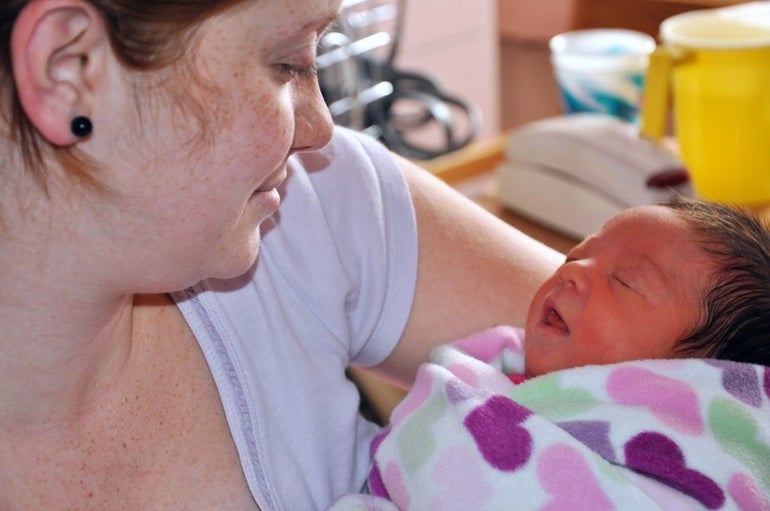The volume of people 30 and older who gave birth decreased for the first time in 10 years during 2020, according to new data published by the Department of Public Health.
The drop of 1.8 percent comes as overall births in Massachusetts in 2020 — 66,442 — declined by 3.9 percent. That compares to the peak volume of 92,461 births in 1990, according to DPH’s 2020 birth data annual report.
Fewer births nationally could eventually hamper states’ economies through lowered tax revenue streams and federal funding, as well as a smaller labor force, according to an analysis from The Pew Charitable Trusts.
DPH, which did not make an official available for an interview on its report Thursday, told the News Service it is difficult to explain the drop in births among people ages 30 and older, for now, with only one year of data — particularly whether it’s an anomaly or could signal an emerging trend.
Meanwhile, the number of births among people under age 30 decreased “more sharply” by 7.6 percent, according to the report.
The national median age of women giving birth is also rising, from 27 in 1990 to 30 in 2019, according to the U.S. Census Bureau.
Delayed childbirth reflects more young women wanting to pursue higher education, the cost of child care and overall cost of living in Massachusetts, DPH said, while also noting that expanded insurance coverage exists for assisted reproductive technology to tackle infertility related to someone’s age.
DPH cautioned that birth rate trends by age could change in the aftermath of the COVID-19 pandemic amid the rise in remote work and flexible work options.
Dr. Danielle Roncari, vice president of medical services at Planned Parenthood League of Massachusetts, invoked expanded access to family planning services — including to contraception following a 2017 law — when asked about factors underlying the state’s decreasing birth rate.
“Planned Parenthood League of Massachusetts continues to see strong interest in long-acting reversible contraception, like IUDs, across all age groups,” Roncari said in a statement. “When people have access to quality, affordable sexual and reproductive health care, they retain control over their health, bodies, and futures, including decisions about if and when to have children.”
All races and ethnicities saw decreased birth rates, including American Indian/Alaska Native by 15 percent, Asian/Pacific Islander by 6.1 percent, Black by 3.9 percent, Hispanic by 0.8 percent and white by 4.6 percent, the report outlines.
The data show that the teen birth rate in 2020 continued to drop following a plateau in 2019. The teen birth rate was 5.9 births per 1,000 female ages 15-19, compared to 20.1 in 2008.
Racial disparities persist in the teen birth rate. The Hispanic teen birth rate in 2020 was 21 per 1,000 females ages 15-19 — compared to 1.7 for Asian/Pacific Islander teens, 10.3 for Black teens and 2.2 for white teens, according to the report.
State sexual education programs for teens incorporate racial equity, DPH told the News Service. Program providers are required to focus their work on racial and ethnic groups who are most affected by teen pregnancy, DPH said.
In another key finding, the report shows the share of people who received adequate prenatal care decreased from about 83 percent to 77 percent in 2020, though the timing coincided with the COVID-19 pandemic when access to care was more difficult.
“Most birthing people experienced the pandemic for at least some portion of their pregnancy. This report describes trends in prenatal care and birth outcomes in Massachusetts in 2020 and does not aim to analyze or explain the impact of the pandemic on these trends,” the report states. “Future studies will be needed to understand the pandemic’s impact on short- and long-term parental and child health.”
About 80 percent of white people who gave birth had adequate prenatal care, compared to 68 percent of Black people, according to the report.
Just over 60 percent of people used private insurance to cover their prenatal care, compared to 39 percent who used public insurance, the report found.

